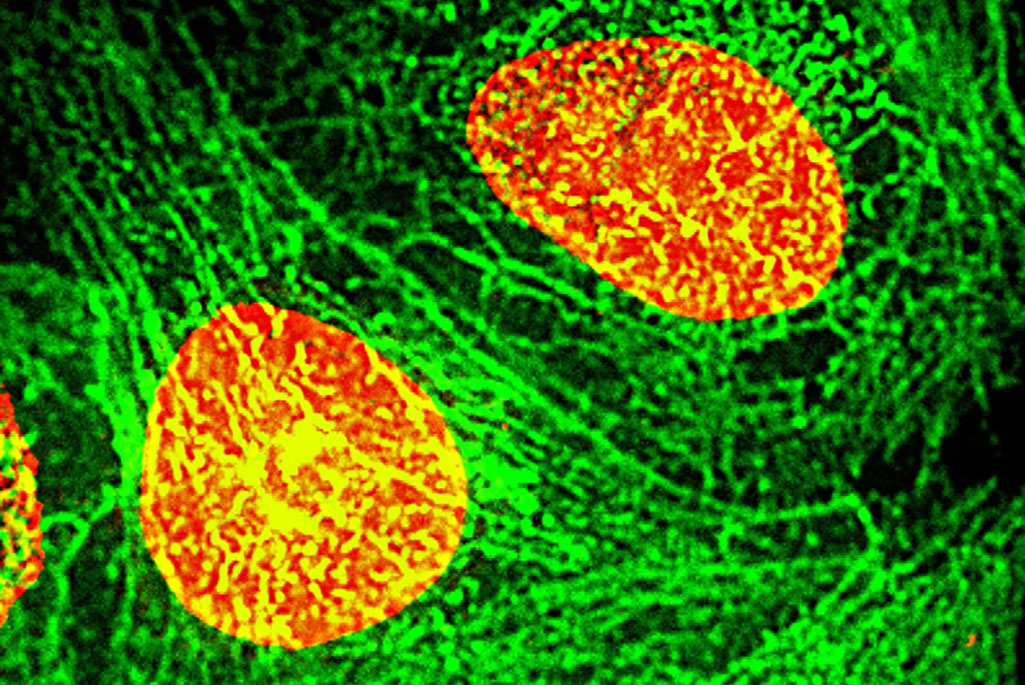The Berkeley Lab developed technology has been licensed by Quantum Dot Corporation and is being used as fluorescence probes for biomedical assays. The technology just won an R & D 100 Award and Quantum Dot Corporation was named by Fortune magazine as one of 2004’s “Cool Companies.” Science honored the technology as one of the Top 10 Breakthroughs of the Year in 2003, and Nanotechnology Now named Quantum Dots as the Best Nanotech Product in 2003, among other honors.
Quantum Dot Corporation (QDC) is a 1998 start-up biotechnology company which licensed nanocrystal technologies developed at Berkeley Lab by Dr. Paul Alivisatos, Shimon Weiss, and colleagues. Due to their unique light emitting properties, Qdots are superior to dye molecules now in use since they allow the simultaneous, color-coded identification of multiple cell structures. The Berkeley Lab technology was first optioned to Quantum Dot in 1998 and then exclusively licensed to them in 1999. Qdots were commercially available in 2002.
QDC has raised over $37.5M in venture capital financing. This has been supplemented by corporate partnerships and major government grants, and product revenue is ramping up. Quantum Dot Corp. recently announced the award of a $2 million grant from the National Institute of Standards and Technology to develop clinical grade quantum dots with initial applications in ocular and cancer imaging. As part of the licensing transaction, the University of California, through Berkeley Lab, has been issued shares in the Quantum Dot Corporation as part of the licensing fees.
“These next-generation quantum dots will … reduce the time frame for testing ocular drugs from ten years to less than one,” stated QDC scientist Joe Treadway, PhD, principal investigator for the grant, “These new materials also will greatly enhance imaging during surgical removal of lymph nodes associated with cancerous tumors, thereby improving the prognosis for cancer patients and saving lives while simultaneously reducing the cost and training required for the procedures.”
In a groundbreaking application, Researchers at Max Planck Institute in Germany recently used Quantum Dots to capture movies of cells transmitting messages. The dramatic video images mark the first time researchers have been able to see moving images of a cell’s basic means of communication with its environment. Quantum Dots are expected to help pharmaceutical companies speed the process of drug development.

Staining of microtubules with Qdot Streptavidin Conjugate. (Image courtesy of X.Wu, Quantum Dot Corporation.)
Qdots have potential applications in genotyping, DNA expression analysis, protein expression analysis, DNA sequencing, biological assays, imaging systems, research instrumentation, optical bar-coding of chemical and biological materials, tagging systems, and high-throughput screening. Quantum Dot Corporation has already developed products and services that speed the process of drug discovery and development. For more information on Quantum Dot Corporation, please visit http://www.qdots.com/.
[Editor’s note: Quantum Dot Corporation was acquired by Invitrogen Corporation (now known as Life Technologies Corporation) in October 2005. Information about Life Technologies Corporation/Qdot® Nanocrystals products is still available at the qdots.com site.]
